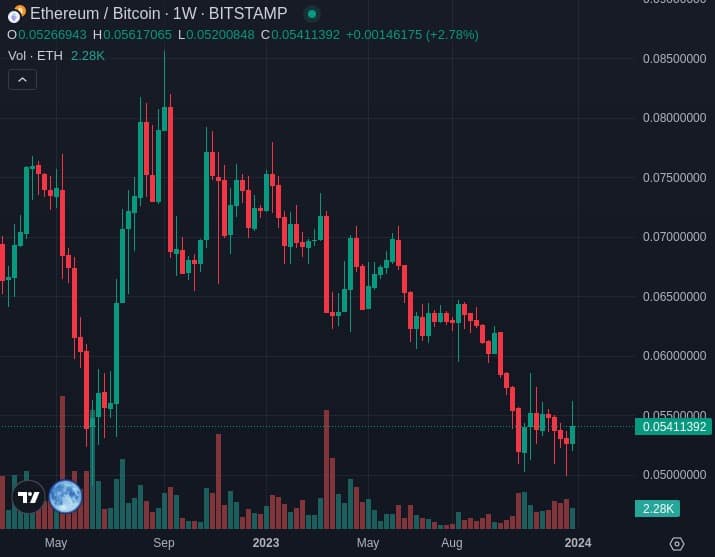Vitalik Buterin, co-founder of Ethereum (ETH), has revealed the outline of the blockchain’s new roadmap. Vitalik didn’t provide a precise timeline for these enhancements, stressing that they will be rolled out in order of priority on Ethereum.
Vitalik delivers Ethereum’s new roadmap
In a thread posted on X, Vitalik Buterin has shared the updated roadmap for the Ethereum blockchain (ETH). As Vitalik points out, the roadmap shared here is relatively similar to last year’s, albeit with a few new changes and clarifications.
By popular demand, an updated roadmap diagram for 2023! pic.twitter.com/oxo58A2KuG
– vitalik.eth (@VitalikButerin) December 30, 2023
To begin with, Vitalik tells us that the technical modification study of the Proof of Stake (PoS) under which Ethereum operates is “consolidating”. As we told you recently, the high number of validators on Ethereum (currently almost 900,000) generates a processing load that is too heavy for the long-term viability of this approach, which requires around 28,000 signatures per slot.
As a result, Vitalik and the main Ethereum developers are exploring ways of reducing the number of signatures required per slot (the figure of 8,192 signatures has been raised by Vitalik on the ethresearch.cr forum), while at the same time studying an alternative to the current system, which requires 32 Ethers to be deposited in order to become a validator on the blockchain, a requirement that is proving to be a hindrance to the network’s decentralization.
Next, Vitalik tells us that there has been “significant progress” regarding “The Surge”, the update that includes the famous EIP-4844 designed to reduce fees on Rollups based on the Ethereum blockchain. In other words, it’s still far too early to expect a reduction in fees on Ethereum, but Layer 2 will be even cheaper to use once The Surge goes live.
It’s very likely that we’ll see the Dencun update during 2024, with the latter due to be deployed on testnet on January 17.
Other updates have also been mentioned, including The Scourge, which will focus on the way maximum extractable value (MEV) is managed on Ethereum. In parallel, this update also aims to optimize network decentralization via the staking system on pools (Rocket Pool, Lido, etc.).
Vitalik declined to give a timetable for these various adjustments / new implementations, which will be deployed in order of priority.
Ethereum lags behind Bitcoin?
Over the past 6 months, Ether has lagged behind Bitcoin, even though it has risen like almost the entire crypto market. Over the past 12 months, ETH has climbed by around 92%, compared with 156% for Bitcoin.
BTC has found itself buoyed in large part by the narrative surrounding Bitcoin spot ETFs, the outcome of which should incidentally be decided in part around January 10, but also because of the craze surrounding Ordinals listings.
Ether could follow the same path with a slight time lag, as BlackRock, for example, applied for a spot Ethereum ETF on November 9, which led to a 10% rise in the Ether price that day.
More broadly, Ether has lagged BTC since the start of 2023:

Evolution of the ETH/BTC pair
However, according to Glassnode data, over 76.8% of Ethereum addresses are currently in profit, compared with 50% last October. At the same time, the number of Ethers stored on crypto exchanges is steadily falling, an observation that reflects a trend towards investors holding rather than selling.
For the time being, it remains interesting to watch whether Ether will manage to break through the famous $2,400 resistance level on a lasting basis.
